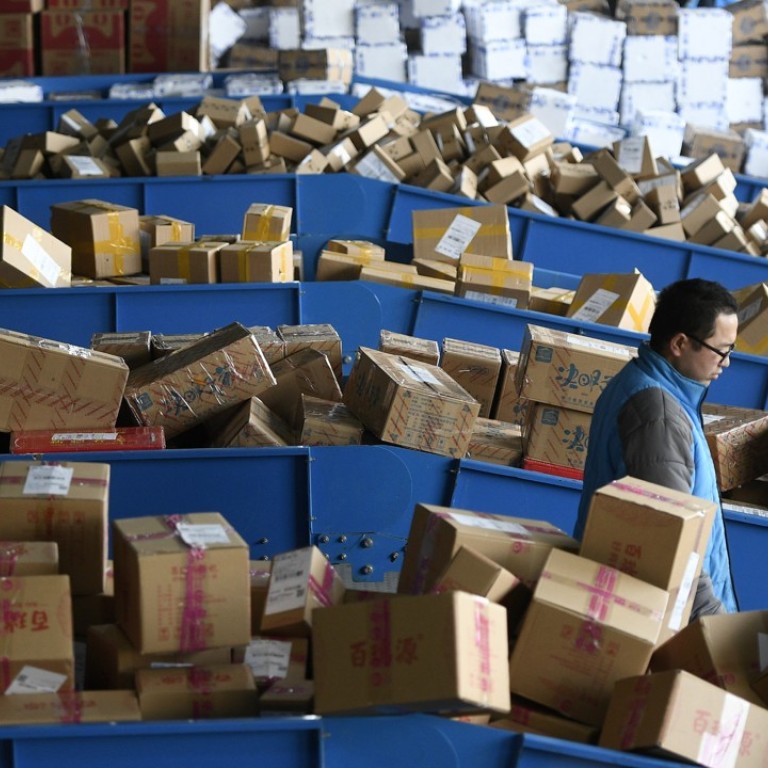
China manufacturing sector improves marginally in November on stronger domestic demand, new data shows
- The Chinese manufacturing sector activity improved marginally in November as strong domestic demand offset a drop in export orders, according to the Caixin purchasing managers index released Monday
- But manufacturing sector growth remained weak in November
The Chinese manufacturing sector activity improved marginally in November, as a rise in domestic demand offset a contraction in foreign orders, according to new economic data released Monday.
However, manufacturing sector growth remained weak in November, the data showed.
The manufacturing purchasing managers’ index compiled by Markit and published by Caixin inched up to 50.2 in November, slightly above the 50.1 level forecast by analysts in a Bloomberg survey and the 50.1 reading in October.
The index level of 50 is the dividing point between expansion and contraction in the sector. The latest figure means that the number manufacturing firms reporting a rise in activity in November was greater than the number reporting a decline. b
The Caixin result follows the official PMI data released Friday that showed manufacturing sentiment posted a larger-than-expected drop to 50.0 in November from 50.2 in October – meaning manufacturing sector growth came to a halt last month.
The Caixin and official PMI data were collected before the announcement Saturday that Chinese President Xi Jinping and US President Donald Trump have reached agreement on a ceasefire in the trade war. The US agreed to postpone for 90 days the increase in the tariff on US$200 billion in Chinese imports to 25 per cent from 10 per cent to allow for further negotiations “on structural changes with respect to forced technology transfer, intellectual property protection, non-tariff barriers, cyber intrusions and cybertheft, services and agriculture”, according to a White House statement. In addition, China agreed to buy a “very substantial” amount of US goods to help reduce the bilateral trade imbalance, with purchases of agriculture products, such as soybeans, beginning immediately.
Overall orders increased in November despite a contraction in export orders caused by the US-China trade war, according to details of the Caixin data. The rise in domestic orders “may be due to a recent raft of government policies aiming to support the private sector,” Zhengsheng Zhong, director of macroeconomic analysis at CEBM Group said in the Caixin statement.
“Overall, domestic demand across the manufacturing sector improved in November, while overseas demand was still subdued,” Zhong said. “Production slowed, confidence was relatively stable, capital turnover was improved, and upward pressure on industrial product prices eased. China’s economy
was weak but did not show significant signs of deterioration.”
The Caixin survey respondents are dominated by smaller, mostly private firms, while the official PMI is a better gauge of activity among larger, mostly state-owned firms. As such, the Caixin result underscores the difficulties smaller private sector firms are having given the trade war and government campaign to reduce indebtedness.
Private sector firms in all sectors account for 60 per cent of Chinese economic activity and 80 per cent of employment.
The government has taken notice.
After its meeting in late September, the Politburo – the Communist Party’s top decision-making body headed by President Xi Jinping – said there were “many difficulties with certain enterprises and the emergence of risks accumulated over long periods of time”.
“We need to attach great importance to this situation and be more forward-looking to respond in a timely manner,” according to a statement carried by the official Xinhua news agency.
“We have to enhance reform and opening up to focus on core problems with targeted solutions … We must get our own things done and firmly seek high-quality growth.”
But at least for the time being, the government will not fall back on its battle-tested practice of large-scale monetary and fiscal stimulus. According to the statement, the leaders decided to continue with the country’s “proactive fiscal policy and prudent monetary policy” while again underscoring the need to “stabilise” employment, finance, trade, foreign capital, investment and expectations.
They also sent an explicit message that Beijing would “unswervingly” support private enterprises. After their meeting three months ago, the Politburo put priority on infrastructure spending to bolster economic activity and did not mention the “private economy”.

